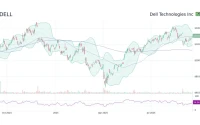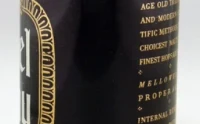SWIFT's Blockchain Bet on Linea Is a High-Stakes Game of Slow-Motion Catch-Up
So, SWIFT woke up and smelled the blockchain. Give me a break. The global banking network, the digital equivalent of a pneumatic tube system that somehow still runs the world, has decided to dip its toes into the 21st century. They’re experimenting with moving their creaky old messaging system onto Linea, an Ethereum Layer-2. And they’ve brought a dozen of their pinstriped pals, like BNP Paribas and BNY Mellon, along for the ride.
The press releases call it a “technological transformation.” I call it putting a spoiler on a hearse.
Let’s get this straight. SWIFT, the network that handles over $155 trillion a year, isn't actually moving money. It’s a glorified telegraph system, sending instructions about money. And their big, bold plan for the future is to use a blockchain to… speed up their messaging. Their stated goal? To get processing time down to one hour.
One. Hour.
In a world where I can send crypto to my cousin in Tokyo in ten seconds for a few cents, the titans of global finance are patting themselves on the back for aspiring to a one-hour settlement time. This isn't innovation; it's a cry for help.
Why Enter a Formula 1 Race With a Golf Cart?
The Slowest Horse in the Race
And the technology they chose for this grand leap forward? Linea. An Ethereum zk-rollup. Now, I’m no maximalist for any particular chain, but you have to ask the question: why? The fact sheet says SWIFT picked Linea because its tech “emphasizes privacy.” That’s corporate-speak for “it has fancy cryptography we can put in a PowerPoint slide.”
But what about speed? You know, the entire point of upgrading a legacy system?
Linea inherits Ethereum’s base speed and can maybe triple it. We’re talking, on a good day, maybe 90 transactions per second (TPS). Ninety. Meanwhile, competitors they could have chosen are doing laps around them. Ripple (XRP) clocks in at 1,500 TPS. Hedera (HBAR) is screaming along at 10,000 TPS.
Choosing Linea for a global payment messaging system is like entering a Formula 1 race with a souped-up golf cart. You can talk all you want about its “advanced cryptographic proofs,” but at the end of the day, it’s getting lapped by everything else on the track. It just makes no sense. The whole thing smells less like a strategic tech decision and more like a committee chose the "safest" and most familiar name in the room, which happened to be ConsenSys, the company behind Linea.
Translating SWIFT's Masterclass in Corporate Nonsense
"A Legal Construct, Not a Technical One"
This is where the real gold is. When asked about the hurdles, SWIFT’s own Tom Zschach delivered a line so perfectly evasive it deserves a trophy. He said, "Settlement is a legal construct, not a technical one."
Let me translate that for you: "The technology is the easy part we can barely get right, but the real nightmare is that our century-old legal frameworks have no idea what to do with a blockchain. So we’re going to use that as an excuse for why this will take forever and probably go nowhere."
He also said, "We’re beyond experiments now." Sir, you are running an experiment. It’s a trial. You’ve been “exploring” blockchain for years, with pilots involving everyone from UBS to Chainlink. Now you’re doing another pilot and claiming it’s not an experiment? This is just PR word salad designed to make it sound like progress is happening. But real progress ain't this slow.
They’ve been at this for years. A pilot here, a trial there. Global banks are planning “live trials” on SWIFT’s infrastructure in 2025. By the time they figure out the legal side, we’ll all be trading brain-to-brain on Neuralink.

This is a bad idea. No, 'bad' doesn't cover it—this is a five-alarm dumpster fire of corporate inertia masquerading as innovation. They’re not solving a problem; they’re creating a committee to study the problem until everyone forgets it existed.
So, Are You the Rebellion or the Empire?
The Sci-Fi Sideshow
And what is Linea, this chosen one, doing when it’s not busy auditioning for the banking world? It’s partnering with Lamina1, a company co-founded by Neal Stephenson. Yes, that Neal Stephenson, the guy who wrote Snow Crash, the book that practically gave us the term "metaverse."
It’s almost poetic. The author who envisioned a vibrant, decentralized digital world is now helping build… a role-playing game called “Artefact” on the same network the world’s biggest banks might use to send messages in an hour. This is the part of the simulation where the wires get crossed. It feels like a desperate attempt to create some kind of buzz, any kind of buzz, to show that Linea has a culture and a community beyond just being SWIFT’s slow, boring pet project.
Honestly, it just bums me out. Every time I see one of my heroes from the cyberpunk era shilling for a VC-funded blockchain project, a little part of my soul shrivels up. It’s like finding out William Gibson is now a keynote speaker at a timeshare conference.
But I digress. This Lamina1 partnership, with its talk of “creator-owned media” and “onchain revolution,” feels completely disconnected from the SWIFT news. It’s two different companies in one trench coat, trying to appeal to anarcho-capitalist crypto bros and risk-averse banking executives at the same time. You can't be both the rebellion and the Empire.
The Foundation is a Joke, and So Is the "Progress"
A Token of Our Displeasure
If you want a real measure of a project’s health, look at its community. And Linea’s community seems… unimpressed.
After their recent token generation event, the internet did what it does best. People started calling the new LINEA token a “memecoin” with no utility. They were asking for basic features, like staking or lending, to give them a reason to hold it.
The response from Consensys CEO Joe Lubin was a masterclass in saying nothing. He suggested that long-term holders might qualify for future airdrops. It’s the oldest trick in the crypto playbook: “Don’t worry about the fact that your token is useless now, just hold on and maybe, someday, we’ll give you some other token that might also be useless.” It’s insulting.
This is the foundation SWIFT is building on. A project with a token so uninspired that its own CEO has to promise vague future rewards to keep people from dumping it. Offcourse, the banks don’t care about the public token. They’ll be using their own private, permissioned version of the network. But it speaks volumes about the ecosystem. It’s a house built on sand, and SWIFT is ready to move in.
Then again, maybe I'm the crazy one here. Maybe this glacial pace, this obsession with legal frameworks over technical excellence, is exactly what these monolithic institutions need. Maybe I’m just too impatient, too cynical to see the 4D chess move of picking the slowest, most corporate-friendly option available.
Nah.
This isn't a bold step into the future. It’s a terrified institution being dragged kicking and screaming into the present, and it's grabbing onto the nearest, safest-looking branch on its way down. The whole project is going to take months, if not years, to develop, and by the time it’s done, the world will have moved on again. It’s the story of old money, old power, and its absolute inability to move at the speed of reality. They think they're building a bridge to the future, but they’re just paving a cow path.
So We're Calling This Progress Now?
Look, let's be real. This whole SWIFT-on-Linea thing is a pantomime. It's a performance for shareholders and regulators, a way for a bunch of executives to stand on a stage and say the word "blockchain" without having to actually change anything fundamental about how they operate. They're not adopting new technology; they're capturing it, neutering it, and wrapping it in so much red tape that it loses the very properties that made it revolutionary in the first place. It’s a multi-trillion dollar game of make-believe. And we’re all supposed to applaud.
Reference article source:
- SWIFT’s Future Call: XRP, HBAR Or Linea’s On-Chain Crown?
- SWIFT Taps Ethereum Layer-2 Chain Linea, Bitcoin's Fall, Mark Cuban's Bitcoin ETF Observation And More: This Week In Crypto - Grayscale Ethereum Mini Trust (ETH) Common units of fractional undivided b
- Neal Stephenson’s Lamina1 joins Linea to bring decentralized media to Ethereum









